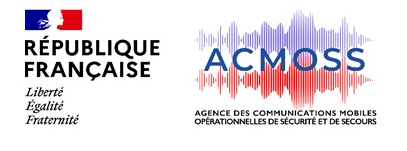
Czechia is currently operating a narrowband Tetrapol network serving over 35,000 first responders. The Ministry of Interior (MoI) and NAKIT are moving forward with plans to implement an LTE/5G-based broadband network to support mission-critical communications.
The solution will integrate a dedicated core network, mainly relying on commercial radio access through national roaming and/or MOCN. While steps for deployment are in progress, a timeline hasn’t been set.

ASTRID is advancing its broadband capabilities with a hybrid approach based on a Multi-Operator Core Network (MOCN) architecture.
ASTRID will utilize the existing infrastructure of commercial telecom operators to enhance coverage and capacity. At the same time, ASTRID will maintain full control over the network’s core infrastructure, or “brain,” along with its own newly upgraded 4G/5G transmission towers.


Nødnett, is the Norwegian nationwide TETRA-based emergency network. The Norwegian, Swedish and Finnish TETRA-networks are connected and provide cross-border services to the users.
Nødnett will combine state ownership and service procurements from commercial mobile operators. Radio coverage and core network will be provided by one or more commercial mobile operators, while the MCX system will be managed directly by DSB on behalf of the Norwegian Government.


With narrowband networks slowly becoming obsolete in France, a great diversity of users will soon have access to enriched communications enabling multi-agencies interoperability. The Réseau Radio du Futur (RRF) program will replace PS narrowband network by a 4G/5G broadband network and an MCX services platform. Contracts have been awarded in October 2022 and Go-Live is expected in Q1 2025.

Currently Estonia uses TETRA as our PPDR network. With the next generation broadband solution, we are in an analysis phase. There is some initial migration roadmap in place. No detailed information is available yet.

The goals of the VMX are to: i) design a new mission critical communication system for the PPDR organizations in The Netherlands, ii) delivering on the promises of NextGeneration mobile broadband communications for our users, iii) use the RAN of one or more MNO’s, with a government-owned core, iv) act in the timeframe 2019 – 2034

SIRDEE (Sistema de Radiocomunicaciones Digitales de Emergencia del Estado) is a shared communications network, and it provides voice and data services to more than 150,000 users. Main users of the network are Policía Nacional and Guardia Civil.

Rakel Generation 2 is the Swedish mobile broadband solution for the next generation of mission-critical communication systems. In 2024, the Swedish Government announced the provision of additional funding to MSB for the establishment of Mission Critical Services and related infrastructure.
The transition to the new communication system is currently planned to occur gradually over the years 2028-2029. The ability of cross-border communication between Norway, Sweden and Finland, which exists in the current Rakel system, needs to be ensured in Rakel Generation 2.


The Special Telecommunications Service (STS) is the central specialized body with legal status, which organizes and coordinates the activities in the field of special telecommunications for public authorities in Romania and for other users provided by the law.
In this capacity, STS is the technical administrator of the national TETRA network. In 2023 an upgrade process was completed for this network with new features. Currently, STS is in the stage of launching public procurement procedures for implementing PPDR broadband network, with a hybrid architecture.

Since 2022, Finnish Public Safety and Security authorities and other critical users are provided with mission critical mobile broadband services. Virve 2 is Erillisverkot’s customer-oriented approach to developing mission critical mobile broadband services.
Erillisverkot use RAN as service procured from commercial MNO connected to our own 4G and 5G MOCN Core networks. During the migration phase, the present Virve radio network will work seamlessly alongside the Virve 2 services until the end of 2028.


The Hellenic Police participates in the Critical Communications Working Group of the European Union. On the other hand, KEMEA (Center for Security Studies) acts as the think tank of the Ministry of Citizen Protection in Greece and it supports the Hellenic Police in the field of Critical Communications. Currently, Greece is preparing the regulatory framework for a National Mobile Broadband project.


The National Authority for Public Security in Italy is the Minister of the Interior, responsible for public order and security and for the coordination of police forces. Enforcement of public order and security policies is entrusted to the Department of Public Security, headed by the Chief of Police – Director General of Public Security.
Department of Public Security is deploying a nationwide broadband mission critical mobile radio network, capable of providing mobile video surveillance services, mission critical group communications and access to police databases for Italian police forces.


Comreg, the Irish Telecommunications Regulator, Office of the Government CIO (OGCIO) have agreed that PPDR Broadband networks will be delivered as a hybrid model of commercial and private networks. To facilitate the private network delivery three small bands of spectrum in Bands 28, 68 and 88 have been proposed and OGCIO are testing these to identify the best fit for a hybrid PPDR network.
Ireland has received funding under The Recovery and Resilience Facility (RRF) which is the centrepiece of NextGenerationEU– this funding supports the roll out of a National Low Latency Platform (NLLP), expected to be completed by 2025.
Page coming soon.
Page coming soon.
